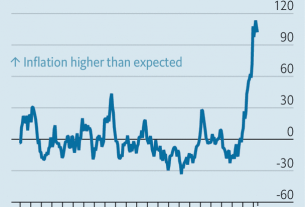
Representative image
Another bumpy ride on Wall Street ended on Friday as Amazon’s positive earnings capped a run of mixed big-tech numbers, with the Nasdaq recovering much of its losses from the previous session and all three benchmarks ending the week in positive territory.
Results from megacap growth stocks have dictated market moves this week, as investors seek out tangible data to support sky-high valuations.
Amazon.com Inc jumped 13.5% after reporting robust earnings in the holiday quarter. The gain expanded its market capitalization by around $ 190 billion, the largest ever single-day increase in value of a U.S. company. read more
This came a day after Facebook-owner Meta Platforms Inc’s disappointing results shook markets and wiped more than $ 200 billion off its valuation, the deepest loss of stock market value in history by a U.S. company.
“These are eye-watering, stomach churning moves normally associated with penny stocks, and yet they are happening in companies with billion-dollar market caps,” said Michael Hewson, chief market analyst at CMC Markets UK.
Despite the earnings-driven whiplash in technology stocks, all three major stock indexes ended their first week of February higher, with the indexes posting their second week of gains in a row.
While Meta lost another 0.3% on Friday, other social media companies which had been dragged down with the Facebook owner rebounded strongly as they posted estimate-beating earnings of their own.
Among them was Snap Inc, surging 58.8% after reporting better-than-expected fourth-quarter user growth and outlook.
Pinterest Inc also jumped 11.2% after its quarterly revenue beat estimates as retailers splurged on advertising during the holiday quarter.
The Dow Jones Industrial Average fell 21.42 points, or 0.06%, to 35,089.74, the S&P 500 gained 23.09 points, or 0.52%, to 4,500.53 and the Nasdaq Composite added 219.19 points, or 1.58%, to 14,098.01.
Among the major S&P 500 sectors which advanced, energy stocks hit their highest since 2018 as crude prices touched a seven-year peak.
Hess Corp was the largest gainer in the sector, jumping 4% to its highest close since September 2014. Occidental Petroleum Corp gained 2%, with its shares ending at levels last seen in February 2020.
Consumer discretionary was the leading sector though, up 3.7% as it was bolstered by Amazon’s performance. The tech behemoth’s gains helped alleviate the drag of Ford Motor Co, which slumped 9.7% after the automaker posted disappointing quarterly numbers.
The Labor Department’s closely watched employment report showed nonfarm payrolls increased by 467,000 jobs last month, compared with the 150,000 jobs addition forecast by economists polled by Reuters.
The data for December was revised higher to show 510,000 jobs created, instead of the previously reported 199,000.
Fears of faster-than-expected rate hikes to curb a surge in inflation have haunted markets since the beginning of the year, with growth stocks such as technology feeling the brunt of that as investors pivot towards current cash flow from betting on future expectations.
“A lot of the high-valuation stuff is going to continue to have trouble and it’s already gotten smacked down a lot,” said Louis Ricci, head of trading at Emles Advisors.
“To us, this jobs report was affirmation that, yes, stocks are going to be jittery and there’s going to be a lot of volatility.”
However, the rate hike prospect has boosted U.S. Treasuries, with yields on the 10-year benchmark hitting their highest levels since December 2019, in the wake of the payrolls data. This is regarded as positive for financials, with Bank of America Corp (BAC.N), Morgan Stanley (MS.N) and Wells Fargo & Co all gaining between 1.8% and 4% on Friday.
Volume on U.S. exchanges was 11.07 billion shares, compared with the 12.37 billion average for the full session over the last 20 trading days.
The S&P 500 posted 26 new 52-week highs and 11 new lows; the Nasdaq Composite recorded 36 new highs and 196 new lows.

